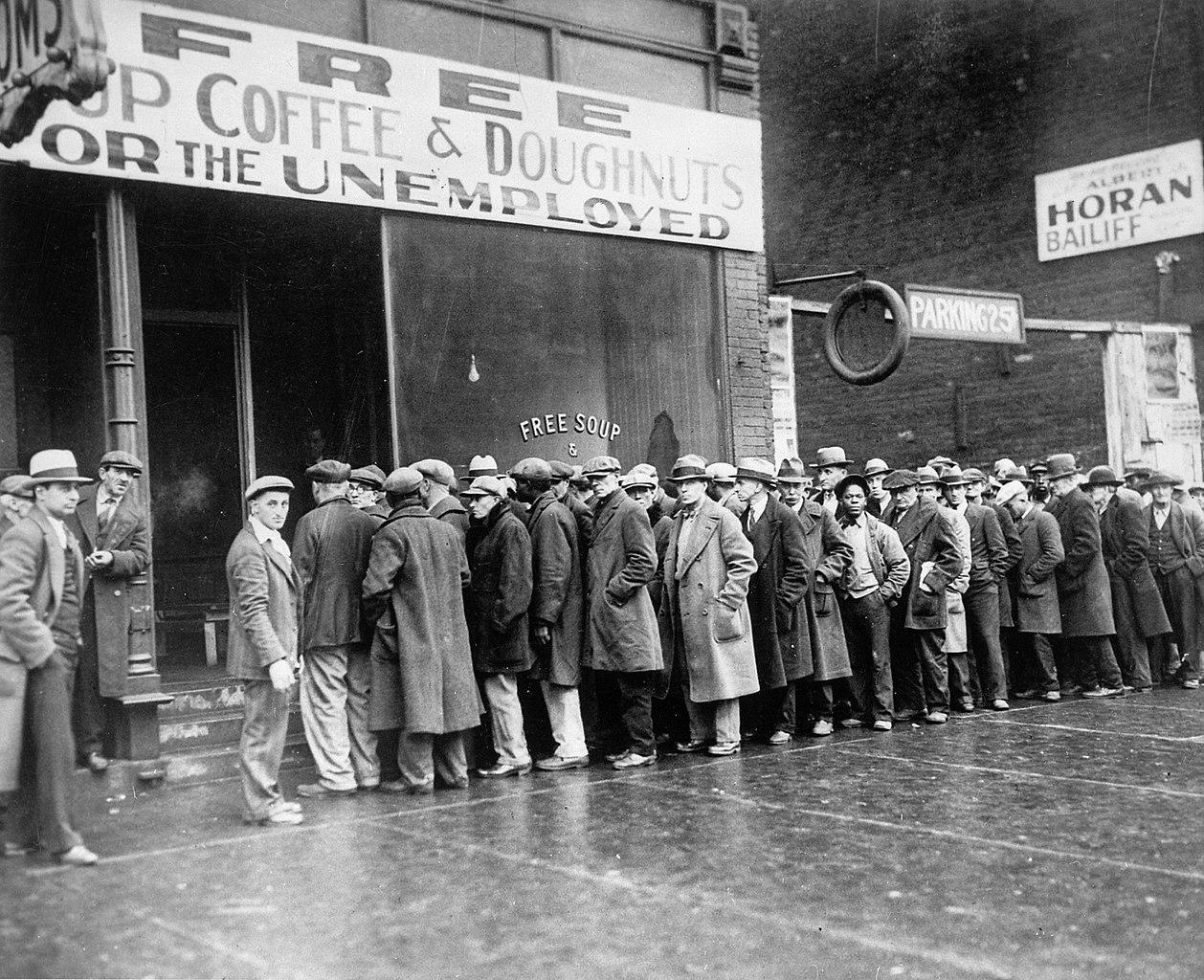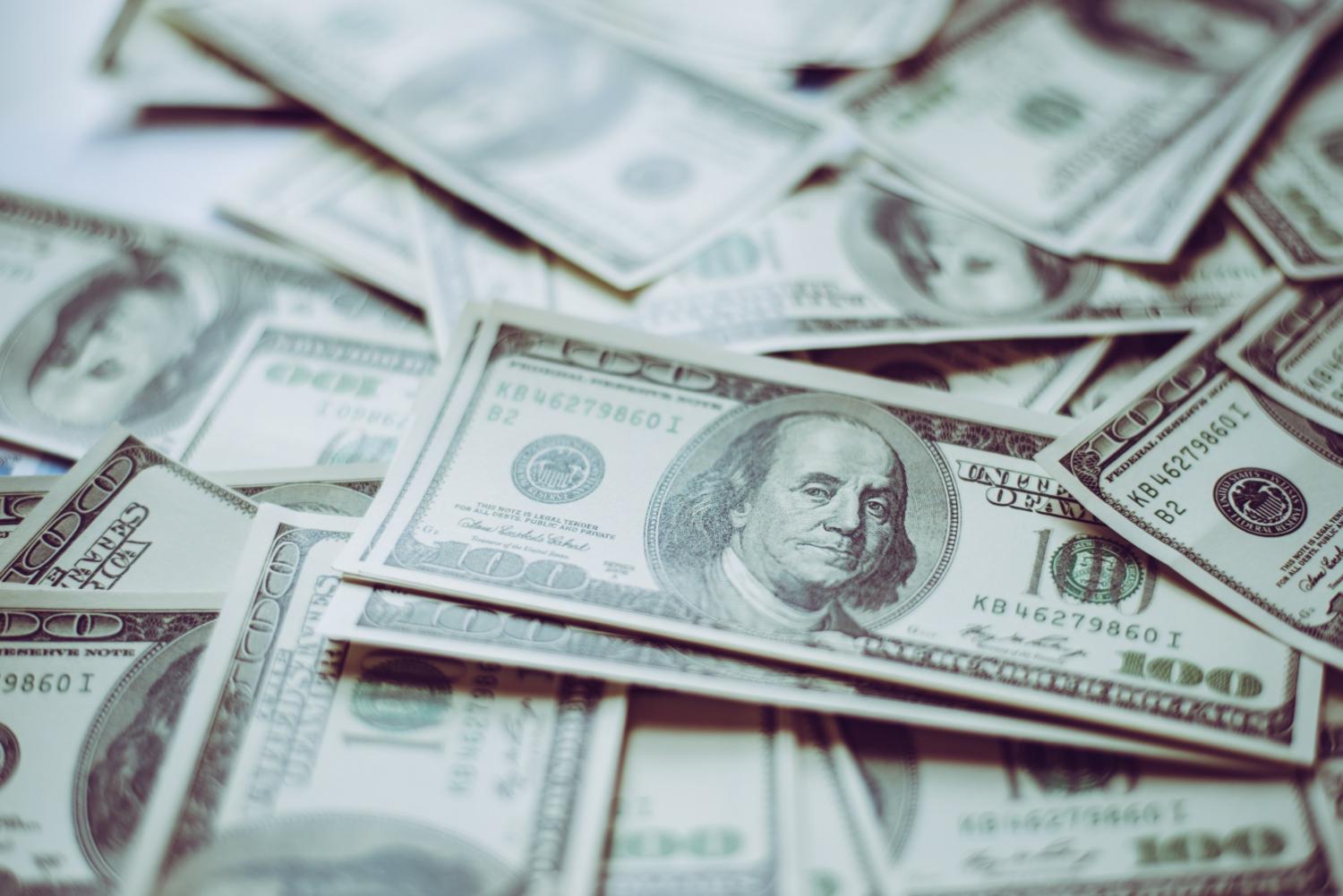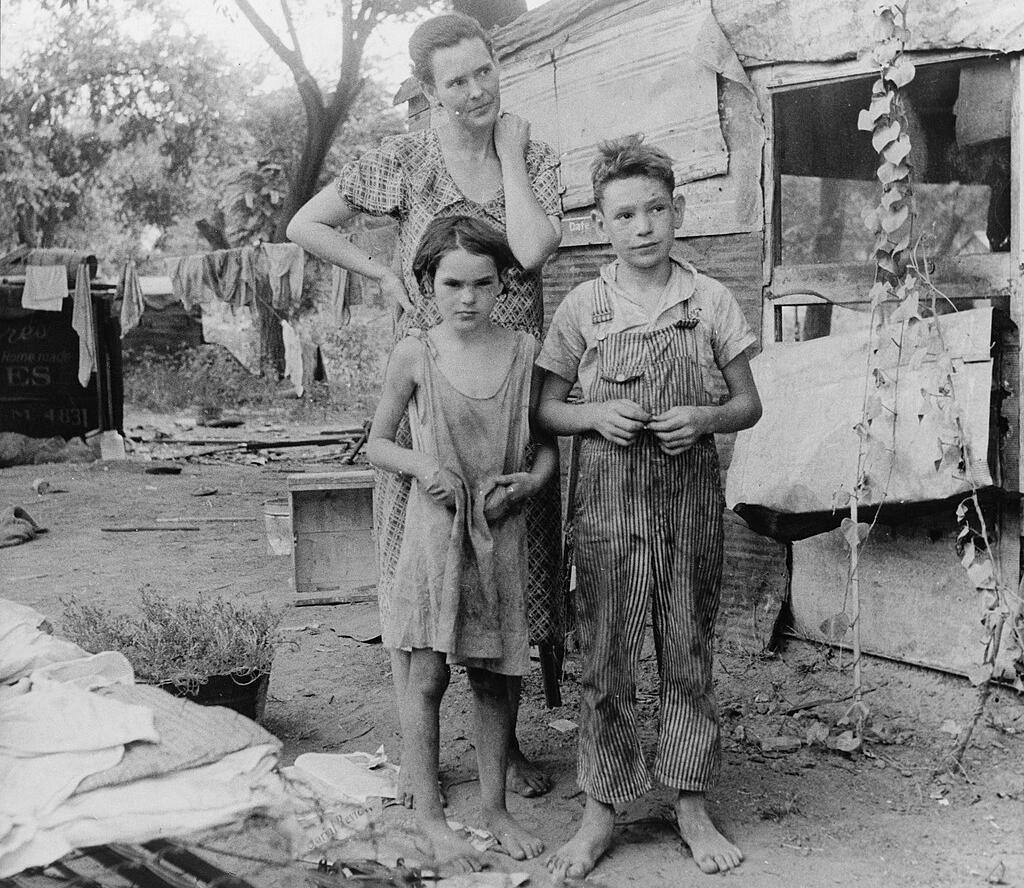A Look Into The Great Depression
The Great Depression, a severe and prolonged economic downturn, not only shook the United States but also reverberated across the globe, affecting economies worldwide.
During the first half of the 20th century, stock prices began plummeting in the US, leading to a period of economic depression characterized by billion-dollar losses, failing businesses, and a high unemployment rate, all of which lasted for close to a decade.
What Led to the Great Depression?
In the years following the Great War, the United States and Western Europe experienced a period of economic growth throughout the Roaring Twenties.

Source: Wikimedia
After a decade of prosperity, the economic landscape dramatically shifted in 1929, plunging the US into one of the most severe economic recessions in history.
The Wall Street Crash of October 1929
Despite the Great Depression affecting almost every country on Earth, experts typically agree that the event began following the Wall Street Crash of October 1929.

Source: Freepik
By October 1929, US stock prices had been gradually falling, and eventually, investors lost confidence in the market, which led to panic selling on “Black Thursday.” As many stocks were bought using leverage, this forced many investors to liquidate, further hastening the decline in prices.
Investors Lose Billions of Dollars
On Black Thursday, the market dropped around 11%. The following Monday, it saw another drop of 12%. After dropping a further 12% the following day, thousands of investors collectively lost billions of dollars.

Source: Freepik
Due to the severity of the stock market crash, experts often cite it as the beginning of the Great Depression, a period of economic downturn that would last nearly 13 years.
Production Drops and Unemployment Rises
The stock market crash led to a significant drop in consumer spending on durable goods and a sharp decline in investments in businesses.

Source: Freepik
While the average American’s overall loss of wealth stemming from the crash was low, it appears to have affected their spending habits. The US also experienced a sharp decline in production, which resulted in widespread unemployment throughout the nation.
Banking Panic Begins in the US
During the fall of 1930, the banks began to suffer as Americans lost faith in the system. Many people decided they wanted all the cash held in their accounts, yet the banks only held so much in reserves.

Source: Wikimedia
Over the next three years, banking panics gripped the nation, eventually resulting in over 20% of banks failing by 1933, which some now call a collapse of the banking system.
The Crippling Effects of the Great Depression
By the time Franklin D. Roosevelt took over as President of the United States in 1933, 25% of the American workforce had fallen into unemployment, and production had dropped to around 33% of what was experienced prior to the events of 1929.

Source: Wikimedia
Reduced output led to lower wages for the workers who remained in employment. Property owners were forced to lower rents, stockholders were paid smaller dividends, and overall profits throughout the nation were slashed.
Factories Close, and Homes Are Foreclosed
During the first five years of the Great Depression, factories continued to close, family homes and farms were lost to foreclosure, mills and mines lay empty, and a vast portion of the US population began to fall into poverty.

Source: Wikimedia
Lower wages made it extremely difficult for families to save their way out of the economic downturn, and so the US entered into what appeared to be a never-ending cycle of problems. However, just when all hope seemed to be lost, the US entered into an economic expansion under Roosevelt.
Roosevelt's Policies Kickstart American Recovery Process
While experts are uncertain as to the motive behind the United States’ recovery, some propose that Roosevelt’s policies accelerated the process. However, the nation remained in a recession for most of the 1930s.

Source: Wikimedia
During FDR’s tenure as president, the NRA (National Recovery Administration) played a pivotal role in stabilizing the price of goods, which helped kickstart the road to recovery.
International Trade Drops by 50%
Regarding the effects experienced around the globe, international trade fell by a staggering 50% during the height of the Great Depression, and various nations experienced unemployment rates that climbed as high as 33%.

Source: Freepik
Cities that depended on heavy industry were hit the hardest during this period, and farming suffered greatly as crop prices dropped by up to 60%.
Unemployment Rates Remained High During the 1940s
By the middle of the 1930s, most nations around the world were well on the road to recovery. Despite this, the US still had an unemployment rate of 15% in 1940.

Source: Wikimedia
However, the negative effects of the turbulent period lingered on in the United States and other nations until the beginning of World War II. During this time, the war industries played a modest role in the recovery process.
The Great Depression Changed the World
By 1942, the US had finally returned to its economic trend path, and the unemployment rate dropped below the levels observed before the Great Depression occurred.

Source: Wikimedia
The prolonged recession changed the world in several ways, the most obvious of which was accelerating the end of the international gold standard. To this day, the Great Depression is still considered the most significant economic disasters in modern history.
